Newsworthy Headlines & Trends in 2008
** Harvest 2008. California had it all in 2008: winter frosts between February and April, rain at inopportune
times, spring and summer heat waves, and smoke from brush fires. Yields were down by as much as 10-30%
in various regions of California. Some winegrowers lucked out and others were devastated. Jonathan Pey of
Pey-Marin Vineyards in Marin County said, “We saw more lignification of seeds and stems this year at my
vineyards, yields were good, and the small clusters looked really, really nice. We had zero burn and raising
generally in Marin. Still, a few vineyards got slaughtered with frost early on.” Smoke taint was a serious
concern in Mendocino County where there were 120 fires and a number of vineyards in the Sonoma Coast
were affected as well. The compounds that cause smoke taint are guaiacol and 4-ethylguaiacol which bind to
sugar in the grape and are released during fermentation. The result is a fishy aroma in the wine. Filtration
companies have the technology to remove smoke taint but the smaller boutique wineries often do not have the
financial resources to filter significant amounts of their wine. Some of the smoke-tainted wines will need to be
de-classified, while others will have such little apparent smoke taint that consumers will be unaware. With the
grape shortage in 2008 and the growing demand for wine outstripping the planting of new Pinot Noir vineyards,
shortages are expected to develop. In Santa Maria Valley, ripening continued gradually with near perfect
conditions between July and September and the result was relatively lower acidity and higher pH in the grapes.
Quality was excellent although yields were variably decreased due to the April frost and early summer heat
wave (up to 109º F in Lompoc). Oregon’s growing season was relatively uneventful with a delayed bud break
followed by a cool summer and harvest that extended until late October. Oregon was spared the rainfall usually
prevalent in October with but a few uneventful showers early in the month. Yields were down due to bad
weather during flowering, but flavor concentration and physiological maturity in the grapes turned out to be
superb. Many vintners are ecstatic about the vintage, claiming it is the best harvest since 1999. 2008 was a
very difficult vintage in Burgundy, marked by cold weather during flowering, an outbreak of mildew and odium
during the summer and hail in selected regions such as Volnay and Marsannay. The harvest was saved by
warm, dry conditions in September. The quality of red Burgundy from 2008 will vary considerably depending
on the producer and the vineyard location.
** Wine consumption continues to increase in the United States, especially among the Millennial population
(ages 15 to 32). Preliminary data from the Wine Market Council for 2008 indicates that 2008 will be the 15th
consecutive year that wine consumption has increased. It is expected that in 2010 the United States will
become the world’s largest wine market and biggest wine importer. The strongest growth has been in wines
priced at more than $12. Pinot Noir is experiencing a growth rate above 20 percent. Millenials (Generation Y)
have shown the greatest increase in wine consumption compared to all other generations (Generation X,
Boomer, Swing and WW II). According to the 2008 Wine Handbook, the 70 million Millenials are a curious
generation as shown by their propensity to experiment with different wines, showing little variety or brand
loyalty. They are increasingly turning to wine as their drink of choice and buy wine based on visual appeal and
name recognition rather than winemaking region. They tend to prefer wine over beer. The Baby Boomers
(ages 45-63), who have more disposable income, tend to spend more on the higher-priced wines.
Interestingly, the Hispanic population is becoming an important wine consumer group. In striking contrast, the French Millenial population have been drinking less wine, preferring other alcohol-based drinks and bottled
sodas and juices. A series of in-depth interviews with French Millenials conducted by Sonoma State University
and France’s University of Agronomics reported in winebusiness.com (Mary 7, 2008) found that the reasons
young French adults are moving away from wine are the anti-alcohol movement in France, a dislike for the
taste of wine, the high expense of wine, confusion about wine, and the perception that wine is an old person’s
drink of choice.
** The cost of producing fine Pinot Noir continues to escalate. Land prices in California exceed almost all wine
growing regions of the world and the cost of vineyard land continues to increase in Oregon as well. Due to
tighter border enforcement, seasonal immigrant workers are become more scarce forcing wineries to hire
workers full-time. Exchange rates are escalating barrel prices and the cost of bottles is rising. Wineries are
experiencing increasing administrative costs dealing with shipping regulations, compliance issues and
management of internet sales. Top-tier Pinot Noirs come from prime vineyards and grapes from these
vineyards are commanding among the highest prices in the industry, upwards of $4,000 per ton in Oregon and
$6,000 per ton in California.
** Wine industry is a leader in green practices. Many winegrowers are returning to farming practices that have
been around hundreds of years. Sustainable farming is de rigeur now and the use of pesticides, herbicides
and fertilizers is being discontinued. Newer wineries, such as Littorai in Sebastopol California, are being constructed of thick straw bales, are bermed into hillsides and incorporating caves to minimize the use of
electricity for cooling in the winery. More than 80 wineries in California have solar power now, most of them
located in Napa and Sonoma County. Many of these wineries, such as Frog’s Leap in Rutherford, are powered
solely by solar energy. Nickel and Nickel Winery in the Napa Valley mounted their solar panels on an irrigation
pond used in the vineyards, termed “floatovoltaics.” The largest solar installation in the world is to be built for
Constellation Wines’ Gonzalez winery in Monterey County. Mitsubishi solar panels will cover 170,000 square
feet on the winery warehouse roof, and will generate enough power to offset 50% of the winery’s needs. When
the winery is operating at less than full capacity, the electricity will be exported to help power the energy needs
of the surrounding residential areas. Stoller Vineyards in Dundee (pictured below), is one of Oregon’s first
green wineries (and only winery in the country to be Gold LEED certified) employs solar panels on the roof of
the winery. Domaine Drouhin Oregon has installed the largest solar energy system in Oregon to date. More
than 500 photovoltaic panels are situated in the midst of the winery’s vineyards in the Dundee Hills. Other
green practices in wineries include geothermal systems in winery offices and guest centers that eliminate the
need for heating and air conditioning, gravity-flow winemaking practices and waste water reclamation to reduce
negative environmental impact. Oregon continues to lead the way in sustainability practices. 26 wineries
initially joined the Carbon Neutral Challenge Initiative in Oregon in 2008 and others are soon to follow. The aim
is to reduce a winery’s carbon footprint and ultimately reach carbon neutrality.
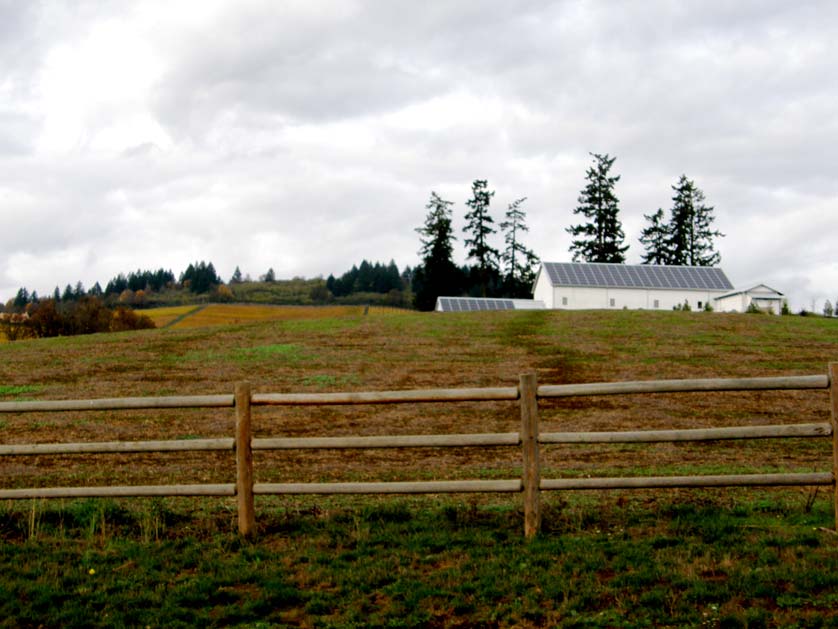
** New wine packaging. Shipping glass bottles is expensive and inefficient and environmentally unfriendly.
Many wineries, primarily producers of lower-priced varieties, are looking at alternatives to wine bottles. These
include packaging wine in a box (a bag-in-box or BIB) which debuted in 2003 but is receiving increasing
interest. The cardboard box is recyclable and due to its larger size (most boxes contain 4 bottles of wine), is
more efficiently packaged and shipped. Glass alternatives include polyethylene terephthalate (PET) bottles
which are lighter in weight than glass bottles, are easier to recycle and transport and won’t break if dropped.
Although consumers perceive wine bottled in plastic as cheap, a study reported in Wine Business Monthly
(August 2008) indicated that if the consumers were allowed to examine the plastic bottles and were shown the
advantages of plastic compared to glass, 47 percent said they would be extremely or very likely to buy wine in
a plastic bottle. Plastic bottles are now available with an internal silicon oxide barrier coating that protects the
wine from taint and can be removed during the PET recycling process. Burgundy producer Jean-Charles
Boisset has been a proponent of PET bottles and has released his Yellow Jersey Vin de Pays d’Or wines in
plastic bottles. Still other alternative wine packages include Tetra Paks, another box container, and aluminum
bottles that are recyclable. Although heavy weighted bottles with large punts and unusual shapes add
perceived value to high-end wines, consumers are increasingly finding them excessive and undesirable for
environmental reasons. I personally urge producers to discontinue these bottles because they don’t fit into
standard wine racks, are cumbersome to lift and travel with, and simply are a waste of energy and resources.
About the only thing they signify to me is that the wine inside is more expensive, not necessarily of better
quality.
** Wine closure debate continues. Winemakers continue to be split about whether it is important to have
oxygen ingress through or around a closure after bottling. In a two-part series written by Richard Grant
Peterson, PhD, for Appellation America (www.appellationamerica.com) in 2008, Peterson pleas to wine writers
and cork promoters to cease telling people that cork’s “breathe.” He points out that no air passes through
corks into wine after bottling. Rather, oxygen diffuses out of corks (which are composed of 80 percent air) into
the wine initially due to the high pressure in cork cells immediately after bottling. Any oxygen ingress into a
bottle of wine comes by way of the interface between the cork and the glass. He believes sound corks are the
preferred closure for fine wines. He also concedes that screw caps “are OK, provided the liner seals well and
continue to keep the air completely out for a long enough time.” My personal observations over the past year
in sampling hundreds of wines, primarily from California and Oregon, is that the incidence of cork taint has
been definitely reduced to less than 2 percent. The attention on alternative closures has forced cork producers
to clean up their act so to speak. Cork continues to provide the advantage of leaving a much smaller carbon
imprint than synthetic corks and screw caps. Although there are some producers fully committed to screw caps
(Loring Wine Company in California and Argyle Winery in Oregon, for example), I have seen no recent trend
among high-end Pinot Noir producers to beat a path to alternative closures except in their lowest end bottlings
or white wines. The producer of the Stelvin screw cap reported that in 2007, the overall screw cap market grew
24% in the United States. Jamie Goode, PhD, reported in Wines & Vines (August 2008), that “designer
closures” with variable oxygen transmission rates are being developed that allow winemakers to choose the
type of closure to match the particular wine they are producing. Research is ongoing to determine how much
oxygen transmission, if any, is desirable in certain types of wine, and how much oxygen existing closures
transmit.” The problem with synthetic corks (Nomacorc, neocork, Supremecorq and NuKorc) has been
excessive oxygen transmission resulting in wines having signs of oxidation after a short time in the bottle.
Synthetic closures seem to be best adapted to wines made for early consumption where aging is not an issue.
DIAM holds great promise as a wine closure. Produced in Australia, DIAM consists of small granules of cork
with synthetic microspheres and is an in-neck closure that performs very similarly to natural cork but with no
TCA problems. The washing process on DIAM closures removes any possibility of cork taint. Different DIAM
closures allow varying amounts of oxygen transmission. I have come across a few bottlings of Pinot Noir
sealed with Vino-Seal, a glass and polymer closure made by Alcoa and known in Europe as Vino-Lok. It
consists of a glass stopper with and “O” ring around its base to provide a seal. The glass stopper is held in
place by an aluminum cap. Oxygen transmission is said to be similar to a tin-lined screw cap. The glass closure
has become popular in Germany, Austria and Italy. ZORK is a tamper resistant polymer closure developed in
Australia that combines an in-neck component with a screw cap type lining that hugs the rim of the bottle. The
wines of Don Sebastiani and Sons, which only uses alternative closures, are closed with the distinctive and
colorful ZORK. ZORK is developing a version for sparkling wines that has the advantages of being able to
reseal a sparkling wine bottle and doesn’t rocket out of the bottle when the bottle is opened. (L to R, Diam,
Vino-Seal, Zork).

** More wine is being sold directly via e-commerce both directly through winery websites and through third
party sites. On-line retailer VinoShipper.com provides boutique wineries a portal for selling their wines and
VinoShipper.com handles all the compliance and tax details associated with shipping. This relieves small
wineries from the administrative headaches of dealing with individual states’ shipping regulations. Over 350
wines are now available, including several from small Pinot Noir producers such as Inman Family Wines, De
La Montanya, Kendric Vineyards, Bohemian Vineyards, Dutton-Goldfield Winery, Kastania Vineyards and TR
Elliott in California and Artisanal Wine Cellars, Laura Volkman Vineyards, Amelie Robert Estate, Et Fille Wines,
Barking Frog Winery and Longplay in Oregon. VinoShipper.com retains 15 percent of the final sale price and
offers price breaks to states where a winery’s wines are not currently shipped. Visit www.vinoshipper.com.

** Utilizing Pinot Noir’s genome map. In 2007, French and Italian researchers determined the sequence of the
almost 30,000 genes found in Pinot Noir in 19 pairs of chromosomes. Researchers in the International Grape
Genome Program are now decoding that sequence. Geneticists and plant biochemists worldwide are looking
to use this information to increase a grapevine’s resistance to pests and disease, make a grapevine more
resistant to drought, and improve flavor and aroma profiles of grapes.
** Dry farming has attracted renewed interest. The dwindling water supplies in California in particular
combined with the belief of some that dry farmed vineyards produce more intense flavors in wine, have led
winegrowers to examine ways to retain more moisture in the ground without irrigating. Dry farming is prevalent
in countries such as Spain and France where it is illegal to irrigate in some regions, but irrigation is almost
universally employed in California where the warm climate and limited rainfall make it a necessity. Fortunately
grapevines are extremely hardy and have some ability to adapt to drought since their origins date to the Middle
East and Mediterranean regions. With proper cultivation, management of cover crops, mulching and the use of
drought-tolerant rootstocks, dry farming is becoming more in vogue in California in locations that are blessed
with soils that have good drainage yet enough moisture-holding capacity and rainfall to supply the needs of the
grapevines. A trend toward establishing vineyards in cool-climate locales will be driven by the suitability of
such locations to support a vineyard with minimal to no irrigation.
** TCA still requires vigilance in the winery. Although most talk about TCA centers on corks, TCA may develop
in barrels, cellar pallets, cardboard boxes, wood structures and even hoses. Fortunately, wineries can
periodically screen for TCA contamination using large laboratories which can test wine, corks, wood and even
the atmosphere in wineries. If TCA is discovered in a wine, it can be removed using polymers that adsorb the
TCA without affecting the flavors or aromas of the wine.
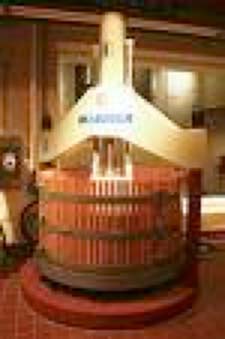
** Newest innovative and gentle winery equipment makes a difference. Wineries are employing
many new relatively affordable winemaking “toys” to improve the quality of their wines. The
newest equipment favored by Pinot Noir specialists include sorting tables, MOG (material other
than grapes) removers, low-force hydraulic basket presses (right), soft and low-impact pumps,
and de-stemmers that are less abrasive to grapes. Newer gentle de-stemmers are too slow for
processing large tonnages of fruit but are very applicable to small production wineries
specializing in Pinot Noir. Modern de-stemmers are preferred because they allow berries to
remain intact. Older caged de-stemmers crushed and tore the berries apart leading to more
undesirable extraction from seeds.
** Dwindling immigrant labor supply has renewed interest in machine harvesting but not for Pinot Noir grapes.
According to Wines & Vines (March 2008), half of all the wine grapes in California are harvested by machine,
but in premium grape growing regions such as Napa and Sonoma it is closer to 35%. The cost of machine
harvesting grapes ($70 to $275 per acre) is significantly less than picking by hand which takes longer and can
cost up to $750 per acre. Artisan Pinot Noir producers in are not generally enamored with machine harvesting
because it removes the ability to do more precise harvesting including leaving second crop behind and
avoiding bunches with rot or mold. In addition, Pinot Noir demands gentle handling and minimal contact with
air. Some Pinot Noir producers have experimented with machine harvesting and found it suitable when the
vineyard is set up properly for it.
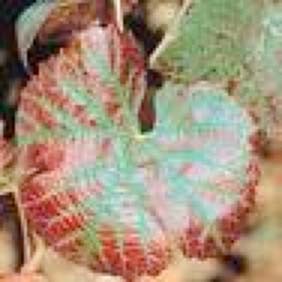
** The glassy-winged sharpshooter, vine mealybug and the light brown apple moth continue to be a concern in
California although these pests have drawn little press of late. Controlling the glassy-winged sharpshooter,
which carries Pierce’s Disease, has cost California more than $25 million a year but
eradication has been successful. In Temecula, for instance, the area now has more
vineyard acreage planted than it did before 1999 when nearly half of the vineyards were
lost to Pierce’s Disease. Leafroll virus appears to be spreading rapidly. Visitors to wine
regions have most certainly seen the signs of leafroll virus: a reddening and rolling under
of the leaf margins on leaves in some vineyards. The result is poor maturation of grapes.
Leafroll virus is spread by the grape and obscure mealybug and possibly by other
vectors. Control and possible eradication depends on impeccably clean plant material
from nurseries and avoidance of spread and contamination from vineyards already
affected.
** More Pinot Noir producers are using three, four and even five-year aged barrels. Increasing the length of
stave seasoning can raise the cost of barrels to $1,400, but some winemakers feel the added cost is justified
by the more refined and gentle oak character that is added to the Pinot Noir. Tonnellerie Radoux™ announced
in December the Radoux OakScan, a system that rapidly analyzes and classifies the oak staves used to make
barrels. The new tool uses infrared spectrometry to instantly quantify extractable tannins (ellagitannins) in
individual oak staves before they enter production. Extractable tannins have a profound effect on the aromas
and flavors of the wine they contact,and the Radoux OakScan™ enables customers to understand the
potential tannic contribution of finished barrels.
** Barrel alternatives are becoming more popular with winemakers. Oak adjuncts include oak chips, blocks
and powders, replacement of oak staves in used barrels or addition of oak staves to stainless steel tanks, oak
products inserted into neutral barrels, and shaving and re-toasting the interior of used barrels. Most
winemakers will still not talk about the use of oak alternatives for fear of creating a perception of inferior quality
in their wines. The biggest challenge in using oak additives is avoiding over-oaking the wine.
** Natural yeast fermentations are increasingly favored for Pinot Noir. Natural fermentation is tricky and
requires more attention, but many winemakers feel the resultant wines have more complexity and better
mouthfeel. (see article in this issue on Olivet Lane Vineyard)
** Warehouse winery complexes are practical and popular. In stark contrast to many of the lush wine country
estates that dot the landscape of noted wine regions, the practical and functional spaces in warehouse
complexes lack the visual impact and romantic appeal of wine but provide a number of advantages to small
producers. Examples abound including the “Lompoc Wine Ghetto” in the Santa Rita Hills and a facility just
south of downtown Sonoma that opened in 2008. Small producers are able to save money by renting space
and using it to buy the best fruit and equipment. As Steve MacRostie, a tenant of the new winery warehouse
complex in Sonoma, said in the Sonoma Valley Sun (March 27, 2008), “We approached our winery as an
artisan’s workshop, not a work of art in and of itself.” Some developers are now building facilities specifically
for housing wineries. An added advantage of the warehouse complex arrangement is that the proximity of
several wineries allows the sharing of information and advice as well as equipment.
** Wine enthusiasts clamor to make their own wine. Crushpad, a 34,000 square foot facility located in San
Francisco, is one of the first urban wineries to offer the commoner with no wine making experience the chance
to craft his own wine in small lots with a manageable financial investment. Crushpad now allows their
customers to receive real-time streaming video to direct the action from the comfort of their home. Crushpad’s
Wine Styler is an online tool that enables individuals to graphically define the style of their wine and
automatically drive the associated technical wine making decisions. Crushpad now has over 5,000 clients
including wine enthusiasts, professional winemakers, sommeliers, wine bars, retailers and restaurateurs.
Grapes are sourced from California, Oregon and Washington. Visit www.cruspadwine.com.
** The remarkable surging German Pinot Noir industry. Germany has quietly become the world’s third largest
producer of Pinot Noir, behind France and the United States. Germany now has roughly 250,000 acres of
vines, with Pinot Noir (called Spätburgunder in Germany) accounting for 30,000 acres, and soon to be second
only to Riesling in planted acreage in Germany. Many of the best examples of German Pinot Noir are not
exported to the United States, so America’s exposure to Spätburgunder has been limited to lesser quality
bottlings. The result is a perception of inferior quality. Look for this to change in the future. One of Germany’s
greatest producers of Riesling, Dr. Ernst Loosen, is becoming more involved with Pinot Noir. He has made
Pinot Noir since 1996 at his J.K. Wolf Winery and has now joined in a partnership with Oregon winemaker Jay
Somers of J. Christopher to produce Pinot Noir in this country.
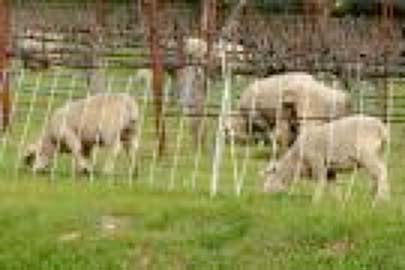
** Sheep have been helpful in providing vineyard maintenance for some time and
now bulls are making an appearance in the Alexander Valley of California. Sheep
and bulls keep weeds in the vineyard down and since they forage for different
vegetation, the combination of the two is very effective. The bulls being used are
only 60% the size of normal cattle. Sheep and bulls have to be removed during the
growing season. The challenge is training the bulls to forage between the vineyard
rows without damaging the vine trellising system.
** NASA has a tool to analyze wine. The Mars Organic Analyzer (MOA) is part of a life-detection system that
will be sent on an expedition to Mars in 2013. The MOA looks primarily for nitrogen-based compounds known
as amines which are in various forms throughout life’s cells. University California Berkeley Professor of
Chemistry, Richard Mathies, invented the MOA. As a wine drinker, he would have a glass or two of red wine
with dinner and then wake up in the early morning hours, hot, flushed and displaying a rapid pulse and
heightened blood pressure. The physiological response was due to the release of adrenaline caused by
tyramine which stimulates adrenaline production. Tyramine is common in foods made with bacterial
fermentation such as wine, cheese and aged meats. Mathies studied winemaking to determine when in the
process tyramine is produced, and found it was created during secondary or malolactic fermentation which is
driven by bacteria. Malolactic fermentation creates both tyramines and histamines, both of which can cause a
reaction in some people. Studies are pending to determine which red wines are highest in tyramines. It would
be helpful to sensitive consumers to know which wines of any type are lowest in tyramines and histamines.
For now, sensitive consumers should look for wines that have not undergone malolactic fermentation.
** Wine label proposals create a stir. Federal regulators are considering requiring all alcoholic beverages to
have both nutrition and alcohol-content displayed on labels. The TTB would mandate that labels duplicate food
labels in displaying how many carbohydrates and calories and the amounts of protein and fat alcoholic drinks
contain. In addition, the proposal makes inclusion of the amount of alcohol in fluid ounces in a drink and the
statement, “A standard drink contains 0.6 fluid ounces of alcohol” optional. The alcohol-by-volume could still be
listed anywhere on the container as it is now. Vintners are generally opposed to the proposed regulations as
every wine would have to be lab tested and labels on wine bottles leave little room to include all the nutrition
facts. A decision by the TTB was supposed to be forthcoming by the end of the year but no ruling had been
released. Bonny Doon Vineyards began listing winemaking ingredients on the back of some labels in 2008.
Confusing all but the most knowledgeable consumers, he lists the ingredients in his Ca’ Del Solo Albarino as
biodynamic grapes, sulfur dioxide, indigenous yeast, organic yeast hulls and betonite. In a related issue with
relevance to labeling, the term “old-vine” is creating new debate in the wine industry. Most winemakers believe
the terminology should be defined and regulated according to Wines & Vines (February 6, 2008). Some
choose to define “old-vine” as a minimum of 20 years and others prefer 50 years as a minimum. There are also
disagreements about the percentage of grapes that should be required in a wine labeled “old-vine.” Some
winemakers would agree that “old-vine” grapes should make up at least 85% of the grapes contained in a wine
sold as “old-vine,” and others demand that 95% of the grapes be from “old-vine” sources. There are variances
to consider among different varietals as well. For example, Pinot Noir vineyards over 20 years are considered
old, yet Zinfandel from a 20 year-old vineyard would not be labeled “old-vine.” The issue of “old-vines” results
from the perception by many consumers who consider “old-vine” wines better, although industry veterans
dispute the validity of this claim.
** China is becoming a major wine producing and wine consuming nation. China’s government promotes wine
as good for health and as a result, the populace eagerly consumes all the wine produced in that country. China
is now the sixth largest wine-producing country in the world. With European advisors and investment, the
latest equipment and quality grape sources, the Chinese are gradually producing more desirable wines.
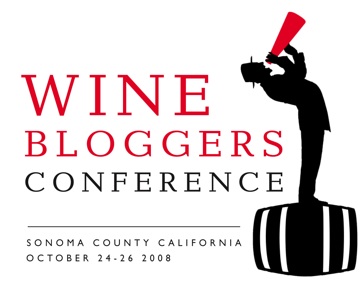
** Wine blogs continue to grow and develop a loyal consumer following. Over 400 wine blogs exist
today and both a North American and European Wine Bloggers Conference was held in 2008. Wine
enthusiasts love the opportunity to comment and argue about wine and blogs
provide the perfect outlet. Very little income is forthcoming from advertising for wine
blogs but that has not discouraged wine blog creators. Wineries themselves often
have a blog aimed at creating added interest in their wine personnel and production.
Tom Wark, who writes his own blog, Fermentation: The Daily Wine Blog, has created
the American Wine Blog Awards to bring attention to the best blogs on the Web.
Visit www.alawine.com to see a listing and a rating of the 100 top wine blogs
compiled from wine search popularity data.
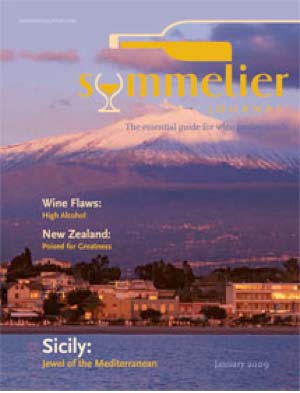
** New wine publication debuts in 2008. Sommelier Journal is directed at professionals in
the restaurant business but the quality of the articles will appeal to all wine enthusiasts. I
applaud the editors’ decision not to publish numerical scores. Subscriptions are $59 for
twelve issues. For more information or to subscribe, visit www.sommelierjournal.com.
** Wine Bars continue to increase in popularity. The newest New York City Zagat Survey
lists 76 wine bars and some are showing up now even in hotel lobbies and airports. Wine
bars can provide a relaxed place to learn about both wine and wine and food pairing and
many young adults are drawn to them for their hip atmosphere and congeniality.
** Established high-quality Pinot Noir vineyards are being sold to new ownership both in California and Oregon.
Seven Springs and Anden Vineyard in Oregon’s Willamette Valley were sold to a California winery partnership,
The Evening Lands, which also acquired Occidental Vineyard on the Sonoma Coast. One of the oldest
vineyards in Oregon, Hyland Vineyard in the McMinnville appellation, was acquired by partners Laurent
Montalieu, Danielle Andrus-Montalieu of Solena Cellars along with John Niemeyer, a partner of the Montalieus
in the NW Wine Company. These change of ownerships have left many long time recipients of grapes from
these vineyards scrambling for new premium grape sources.
** Several pro-wine bills were signed into legislation in California in 2008. AB 2004 allows visitors to wineries
to buy and consume wine on the premises. AB 2090 creates a temporary license for winery and grower
associations to present tasting events to educate consumers and retailers about wine. AB 2293 allows
wineries to distribute their wines (for free, if they choose) directly to consumers at invitation-only gatherings
with a caterer’s permit. AB 3071 removes prohibitions against the presence of minors at wineries. SB 157
permits nonprofit groups to hold events where wine is sold in coordination with California wineries. Wine
orders can be taken and custom crush producers can donate and pour wine.
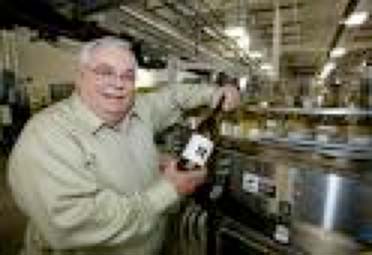
** No pardon for the man behind “Two Buck Chuck.” President Bush did not grant a
pardon in a dated grape fraud case. Fred T. Franzia, nephew of Ernest Gallo, pleaded
guilty in 1993 to conspiracy to defraud by passing off cheap grapes as more
expensive Zinfandel. He paid a $500,000 fine and served five years on probation.
Franzia is famous for the quote about Robert Parker, “He likes tannic wines that make
people gag.”
** Anderson Valley on the move. Three new wineries, all with tasting rooms, are in
the works in Anderson Valley. Goldeneye built a 12,000 case winery in Philo, Jim Ball Vineyard has a new
winery now open across the street from Goldeneye’s tasting room on Highway 128 and Foursight Wines,
owned by the Charles family who are long time growers in Anderson Valley, has launched their new label and
are constructing a new facility southeast of downtown Boonville. In addition, Navarro Vineyards is rumored to
have a new vineyard and winery south of Boonville in the planning stages. Don and Rhonda Carano bought
the Lazy Creek Vineyard in Anderson Valley and plan to keep the label intact. The winemaker at Ferrari-
Carano, Christy Griffith, will be the new winemaker at Lazy Creek Vineyard.
** In August, 2008, the TTB suspended approval of all AVA applications currently submitted and temporarily
refused to accept any new ones. The TTB is considering possible revisions of the current AVA approval
process.